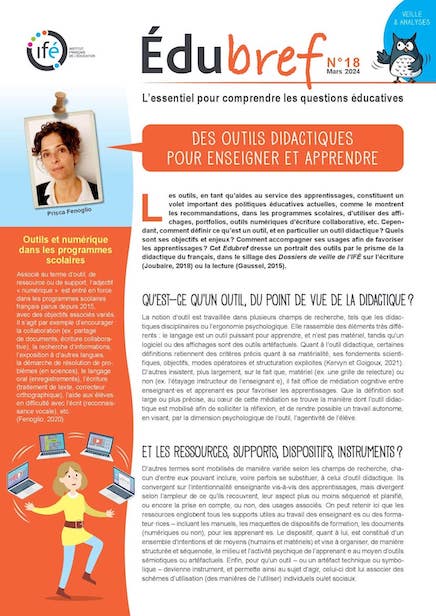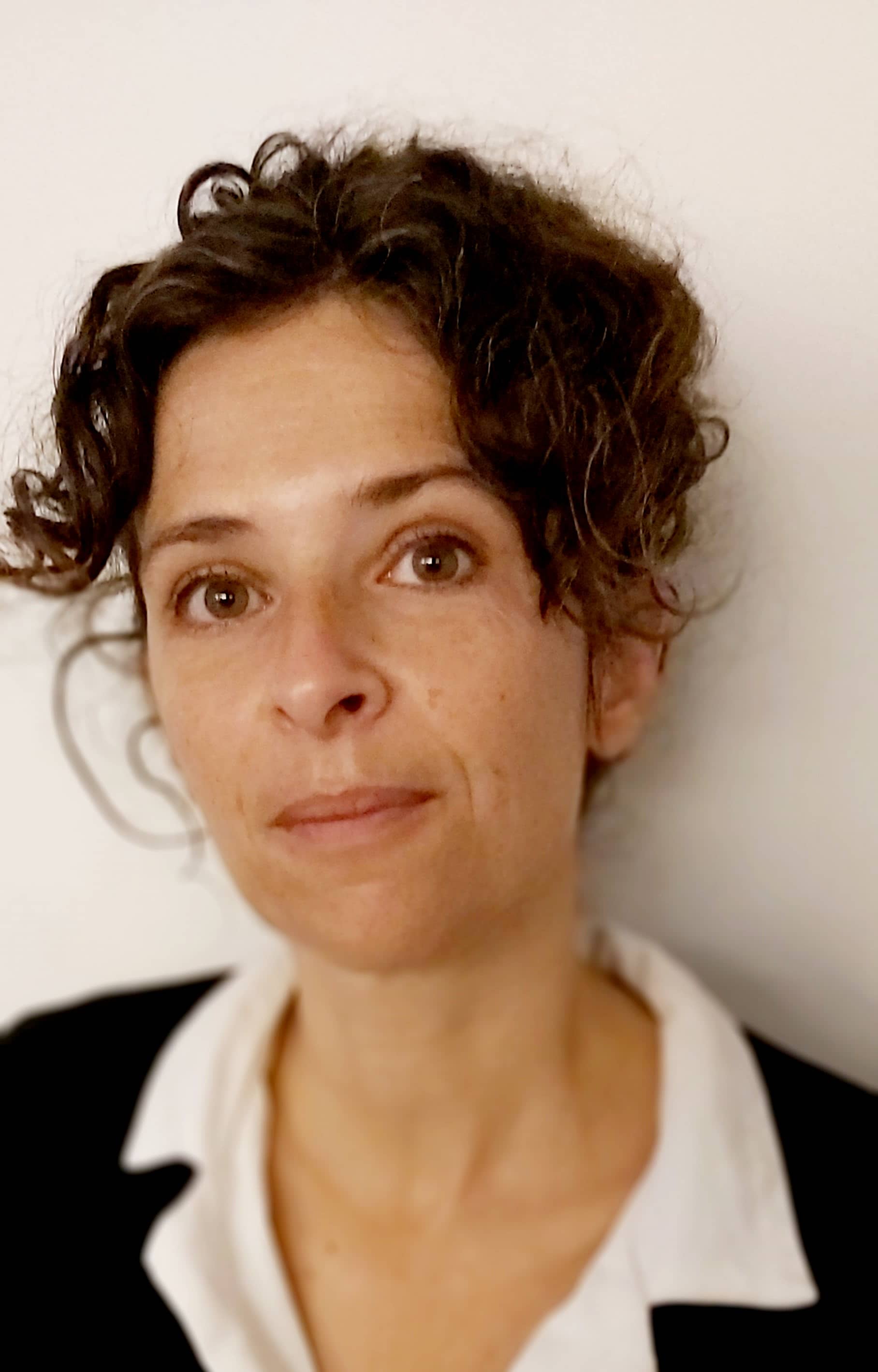Pays : France
Langue(s) : français
Auteur(s) : LACOUR Martine
Date de soutenance : 2012
Thèse délivrée par : Université de Franche-Comté
Section(s) CNU : section 16 : Psychologie, psychologie clinique, psychologie sociale
Sous la direction de : Denis MELLIER
Jury de thèse : Blanchard-Laville, Claudine ; Cuynet, Patrice ; Mellier, Denis ; Moll, Jeanne ; Sirota, André
« Cette thèse s'inscrit dans la continuité des travaux sur l'analyse des pratiques dans le champ de l'enseignement.Parmi les nombreux dispositifs, à la jonction du psychique et du professionnel, celui de Groupe de Soutien au Soutien(GSAS) travaille la complexité du lien enseignant-élève à partir des cas d'élèves apportés par les participants.L'objectif de la thèse est de comprendre et d'analyser l'efficacité du fonctionnement de la méthode des GSAS àpartir de deux hypothèses. Premièrement, la structure temporelle soutient le travail de contenance du groupe enpermettant une expérience singulière d'empathie. Deuxièmement, l'appropriation subjective de cette expérienceempathique contribue à une modification du lien enseignant-élève sur le terrain. Le matériel clinique provient de deuxsources de données complémentaires : d'une part, le fonctionnement des groupes en tant qu'observatrice-participante etanimatrice et d'autre part, des entretiens cliniques réalisés auprès de participants.Une première partie théorique montre l'ancrage du GSAS imaginé par le psychanalyste J. Lévine dans l'histoiredu mouvement de la pédagogie psychanalytique, sa filiation et ses écarts aux groupes-Balint. Elle présente la méthodeen trois temps suivis d'un moment initié dans le groupe pour préparer le retour en classe. La seconde partie théoriquetraite de l'empathie, d'un point de vue historique et conceptuel. Puis, l'empathie, articulée au Moi-peau et dans undialogue entre le Moi et le Soi, est explorée dans une perspective psychanalytique et une approche spirituelle.Les résultats de la partie clinique montrent que l'expérience du processus empathique prépare aupositionnement empathique. L'accueil des affects ou émotions d'un sujet exposant un cas d'élève puis, le jeud'identifications et de projections pour entrer dans le paysage intérieur supposé de l'élève et, en dernier lieu, leséchanges autour de pistes psycho-pédagogiques sont constitutifs de l'expérience groupale. Celle-ci prépare au gesteintérieur qui caractérise le positionnement empathique : accueillir-comprendre-accompagner.La spécificité de ce dispositif est de transmettre envers les élèves une posture proche de l'empathie maternelle.Le travail psychique de l'attention et celui de l'identification projective normale, à l'oeuvre dans cette pratique cliniquegroupale, pourraient concerner d'autres métiers du lien, là où des sujets, confrontés à la souffrance d'autres sujets, ontbesoin d'un étayage de leur Moi-professionnel. »
Abstract
Teacher's empathy and pupil's psychic suffering study of processes in "Support to support group"
« This thesis continues the works on practice analysis in the teaching field. Among the numerous settings inwhich the psyche and the professional meet, the Support to Support Group works (in french GSAS) on the complexityof the teacher-pupil relationship, through case studies of pupils brought in by participants.The aim of this thesis is to understand and analyse the efficiency of the GSAS method. Two hypotheses haveguided the research: first, the time-structure process supports the holding work of the group, allowing for a uniqueempathic experience; second, the subjective appropriation of this empathic experience contributes to modify theteacher-pupil relationship in the classroom. The clinical material derives from two complementary sources: the waygroups function as observed as a participant and trainer on the one hand, as well as clinical interviews of GSAS parti -cipants on the other.A first theoretical part shows how the GSAS, imagined by the psychoanalyst J. Lévine, is rooted in the historyof the psychoanalytic pedagogy movement, how it derives and differs from Balint Groups. It introduces the 3 phasesmethod, followed by a moment initiated in the group to prepare the return in the classroom. The second theoretical partdeals with empathy from a historic and conceptual point of view. The empathy, then related to the skin-ego and in adialogue between the ego and the self, is explored in a psychoanalytical perspective and a spiritual approach.The results of the clinical part show that experimenting the empathic process prepares for the empathic positioning.Receiving the affects or emotions of a person presenting a pupil's case, then the interplay of identifications andprojections to enter the pupil's supposed inner landscape, and lastly, the exchanges around psycho-pedagogical hypothesesare all part of the group experience. This experience prepares for the inner gesture which characterises theempathic positioning: receiving-understanding-supporting.The specificity of this setting is to pass on a posture close to maternal empathy towards the pupils. The psychologicaltasks of attention and of normal projective identification at work in this clinical group practice could concernother professionals confronted with the suffering of others, who also need to be supported in their professional-ego. »
URL : http://tel.archives-ouvertes.fr/tel-00980786
mot(s) clé(s) : élève / étudiant, enseignant
Empathie des enseignants et souffrance psychique des élèves : étude des processus psychiques dans les groupes de soutien au soutien
Auteur(s) : LACOUR Martine
Date de soutenance : 2012
Thèse délivrée par : Université de Franche-Comté
Section(s) CNU : section 16 : Psychologie, psychologie clinique, psychologie sociale
Sous la direction de : Denis MELLIER
Jury de thèse : Blanchard-Laville, Claudine ; Cuynet, Patrice ; Mellier, Denis ; Moll, Jeanne ; Sirota, André
« Cette thèse s'inscrit dans la continuité des travaux sur l'analyse des pratiques dans le champ de l'enseignement.Parmi les nombreux dispositifs, à la jonction du psychique et du professionnel, celui de Groupe de Soutien au Soutien(GSAS) travaille la complexité du lien enseignant-élève à partir des cas d'élèves apportés par les participants.L'objectif de la thèse est de comprendre et d'analyser l'efficacité du fonctionnement de la méthode des GSAS àpartir de deux hypothèses. Premièrement, la structure temporelle soutient le travail de contenance du groupe enpermettant une expérience singulière d'empathie. Deuxièmement, l'appropriation subjective de cette expérienceempathique contribue à une modification du lien enseignant-élève sur le terrain. Le matériel clinique provient de deuxsources de données complémentaires : d'une part, le fonctionnement des groupes en tant qu'observatrice-participante etanimatrice et d'autre part, des entretiens cliniques réalisés auprès de participants.Une première partie théorique montre l'ancrage du GSAS imaginé par le psychanalyste J. Lévine dans l'histoiredu mouvement de la pédagogie psychanalytique, sa filiation et ses écarts aux groupes-Balint. Elle présente la méthodeen trois temps suivis d'un moment initié dans le groupe pour préparer le retour en classe. La seconde partie théoriquetraite de l'empathie, d'un point de vue historique et conceptuel. Puis, l'empathie, articulée au Moi-peau et dans undialogue entre le Moi et le Soi, est explorée dans une perspective psychanalytique et une approche spirituelle.Les résultats de la partie clinique montrent que l'expérience du processus empathique prépare aupositionnement empathique. L'accueil des affects ou émotions d'un sujet exposant un cas d'élève puis, le jeud'identifications et de projections pour entrer dans le paysage intérieur supposé de l'élève et, en dernier lieu, leséchanges autour de pistes psycho-pédagogiques sont constitutifs de l'expérience groupale. Celle-ci prépare au gesteintérieur qui caractérise le positionnement empathique : accueillir-comprendre-accompagner.La spécificité de ce dispositif est de transmettre envers les élèves une posture proche de l'empathie maternelle.Le travail psychique de l'attention et celui de l'identification projective normale, à l'oeuvre dans cette pratique cliniquegroupale, pourraient concerner d'autres métiers du lien, là où des sujets, confrontés à la souffrance d'autres sujets, ontbesoin d'un étayage de leur Moi-professionnel. »
Abstract
Teacher's empathy and pupil's psychic suffering study of processes in "Support to support group"
« This thesis continues the works on practice analysis in the teaching field. Among the numerous settings inwhich the psyche and the professional meet, the Support to Support Group works (in french GSAS) on the complexityof the teacher-pupil relationship, through case studies of pupils brought in by participants.The aim of this thesis is to understand and analyse the efficiency of the GSAS method. Two hypotheses haveguided the research: first, the time-structure process supports the holding work of the group, allowing for a uniqueempathic experience; second, the subjective appropriation of this empathic experience contributes to modify theteacher-pupil relationship in the classroom. The clinical material derives from two complementary sources: the waygroups function as observed as a participant and trainer on the one hand, as well as clinical interviews of GSAS parti -cipants on the other.A first theoretical part shows how the GSAS, imagined by the psychoanalyst J. Lévine, is rooted in the historyof the psychoanalytic pedagogy movement, how it derives and differs from Balint Groups. It introduces the 3 phasesmethod, followed by a moment initiated in the group to prepare the return in the classroom. The second theoretical partdeals with empathy from a historic and conceptual point of view. The empathy, then related to the skin-ego and in adialogue between the ego and the self, is explored in a psychoanalytical perspective and a spiritual approach.The results of the clinical part show that experimenting the empathic process prepares for the empathic positioning.Receiving the affects or emotions of a person presenting a pupil's case, then the interplay of identifications andprojections to enter the pupil's supposed inner landscape, and lastly, the exchanges around psycho-pedagogical hypothesesare all part of the group experience. This experience prepares for the inner gesture which characterises theempathic positioning: receiving-understanding-supporting.The specificity of this setting is to pass on a posture close to maternal empathy towards the pupils. The psychologicaltasks of attention and of normal projective identification at work in this clinical group practice could concernother professionals confronted with the suffering of others, who also need to be supported in their professional-ego. »
URL : http://tel.archives-ouvertes.fr/tel-00980786
mot(s) clé(s) : élève / étudiant, enseignant














